Contents
With the fast development of electric and electronic devices and systems, a wide range of DC power connectors have become ubiquitous in people's daily lives. Originating in the mid-20th century, DC connectors have evolved in terms of appearance, sizes, and applications. Understanding the fundamentals of DC connectors and DC connector types can help you choose the right connector. Read on for more information.
What is a DC Power Connector?
The DC power connector, or DC connector, is a common electrical connector used to provide safe and reliable direct current power to electronic devices in low-voltage systems. DC connectors may have two or more pins to enable power supply. There are plugs, jacks, and receptacles used for DC power. These connectors meet the requirements of various electronic products, such as laptops, portable household appliances, electronic instruments, audio devices, etc.
DC connectors are usually designed for specific devices, so their current and voltage ratings are set according to the requirements of the devices. Generally, the current value of DC connectors does not exceed 5 A, with 2 A being the typical value; their operating voltage can be up to 48 V, with a typical value of 12 V. Common DC power connectors used for consumer electronics like laptops operate within 24 volts. Still, connectors for larger electronic devices might handle higher voltages ranging from 24 to 48 volts. The power of DC connectors depends on different factors, including the size, materials, and design. Connectors of the same size may also match different currents and voltages, so it’s essential to match the correct voltage rating to avoid equipment damage.
Features of DC Power Connectors
There is no universal standard for DC power connectors, and they can vary in materials, properties, conductors, plug design, mounting, and polarity. Let's delve into the features of DC power connectors across these six aspects.
- Material
DC connector materials depend on types, applications, and environmental conditions. The conductive part is generally made of alloys or metals like copper and aluminum, providing excellent electrical conductivity, mechanical properties, and corrosion resistance. The housing is typically made of plastic that can be molded into different shapes and colors. Some DC connectors even feature gold-plating materials for optimal electricity performance. The material used for DC connectors should also withstand frequent mating and unmating.
- Property
DC connectors typically feature insulation to prevent leakage and avoid electrical contacts between live electrical parts, minimizing the risk of short circuits. In addition, to accommodate environments with interference risks, some DC connectors also have shielding to reduce electromagnetic and radio frequency interference. For some extreme environments, DC connectors should be water-resistant to decrease potential damage.
- Conductor
Common DC barrel connectors have two conductors: the center pin and the outer sleeve. In most cases, the center pin is designed for power, and the outer sleeve is for ground. This conductor configuration can ensure safety. Some DC barrel jacks feature a third conductor used to examine if a plug is inserted into the jack and disconnect the internal battery when connected to power, thereby preventing damage to the battery from incorrect charging.
- Plug Design
DC plugs are frequently linked to DC power cables in line. The horizontal structure enables easy alignment during mating. However, right-angle plugs are preferred in some situations as they occupy less space when plugged in and offer better retention force between the mated parts.
- Mounting
Depending on different applications, DC power jacks have various mounting options. For example, panel-mounted DC jacks can be mounted anywhere on the chassis. For circuit board-mounted DC sockets, methods such as through-hole mounts soldered to PCB and SMT mounts are also available. In some cases, DC power receptacles are also mounted on the terminal of a power cord for current receiving.
- Polarity
DC connectors own positive and negative poles. Though there is no standard for the polarity of DC connectors, the center pin usually serves as the positive pole, and the outer sleeve is the negative pole. Polarity is hard to identify, so many connectors are labeled with diagrams or text for clarity. You should pay attention to the polarity of DC connectors, ensuring correct mating of positive and negative poles to avoid risk of damage.

Female vs. Male DC Power Connector
Identifying the gender of the DC power connectors can sometimes be perplexing. A straightforward distinction between female and male lies in the center pin. A DC connector with a center pin is conventionally classified as male, whether it is a plug or a socket. A female DC power connector is designed to match the male components and features no center pin. But people sometimes roughly treat a plug as the male DC connector and a socket as the female DC connector. You may carefully compare product images and specifications rather than solely relying on descriptions to find the correct product.
Common DC Connector Types
DC power connectors are common in daily life, such as cigarette lighter sockets and DC connectors for laptops. They come in numerous types, each designed for specific activities. Here is an overview of some important DC connector types.
Barrel Connector
Barrel connectors, also known as cylindrical connectors or coaxial power connectors, are considered the most common DC power connectors for their ease of manufacturing. They usually feature concentric barrels and center pins. Barrel connectors have varying outer diameters (OD), inner diameters (ID), and lengths of the metal sleeve, in which the most common sizes are 5.5 mm * 2.5 mm (OD * ID) and 5.5 mm * 2.1 mm, along with 9.5 mm as the typical length.
Standard coaxial power connectors do not require orientation when plugging in, facilitating the usage. However, they lack a balanced tolerance between the central pin and the inner sleeve, which can cause a loose connection. Consequently, some barrel connectors add locking threaded nuts, locking rings, or locking tabs to resist accidental unplugging.

DIN Connector
DIN connectors are a type of connector with a multi-pin design originally defined by the German Institute for Standards. Standard DIN connectors come in 3-pin to 8-pin versions and different pin layouts. The DIN connector has a miniaturized version called mini-DIN. These connectors are widely used in audio equipment, musical instruments, and lighting systems.
USB Connector
USB DC connectors initially gained popularity as power and data transfer connectors for computers. USB-A connectors find extensive usage in power-only applications not only for their prevalence. They are preferred as a typical connector to provide 5 VDC voltage. Micro USB connectors are used to charge mobile phones. USB-C connectors feature a more compact structure and eliminate the trouble of orientating, surpassing previous USB connectors. Moreover, they exceed the traditional limits by delivering voltages of up to 20 V. USB Type-C connectors are widely used in new smartphones and laptops.
Banana Connector
Banana connectors are characterized by their banana-shaped contact tips, which enhance connection and conductivity. Regular banana connectors are designed for low-voltage audio and video devices. However, they may not suit the power supply due to their incomplete insertion, lack of double insulation, and tendency to cause wrong connections. You’d better choose specialized banana plugs with enhanced features for power supplies.
Conclusion
In addition to the above four types, there are many other popular DC connectors. For example, DC connectors with screw terminals facilitate the design and testing of DC equipment. Besides, XT series connectors are suitable for lithium batteries and are favored by enthusiasts of radio-controlled (RC) models. DC connectors cover diverse fields, such as energy, telecommunications, consumer electronics, transportation, and solar systems. In short, a basic understanding of DC power connectors can benefit anyone using power devices, helping you select and utilize DC connectors for reliable connections.
For more information on this topic, you can keep up on our blogs. While VCELINK offers general and basic information for our customers and other visitors to the website, it’s not professional advice.
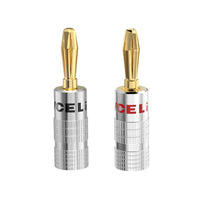
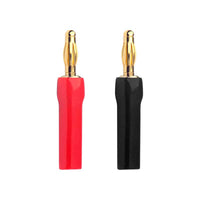

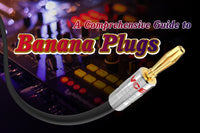
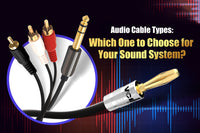
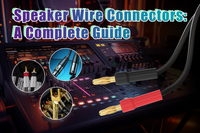
Be the first one to comment.
Leave a comment